Here’s my latest still life painting (Lemons & Limes) and its development.
Here’s my latest still life painting (Lemons & Limes) and its development.
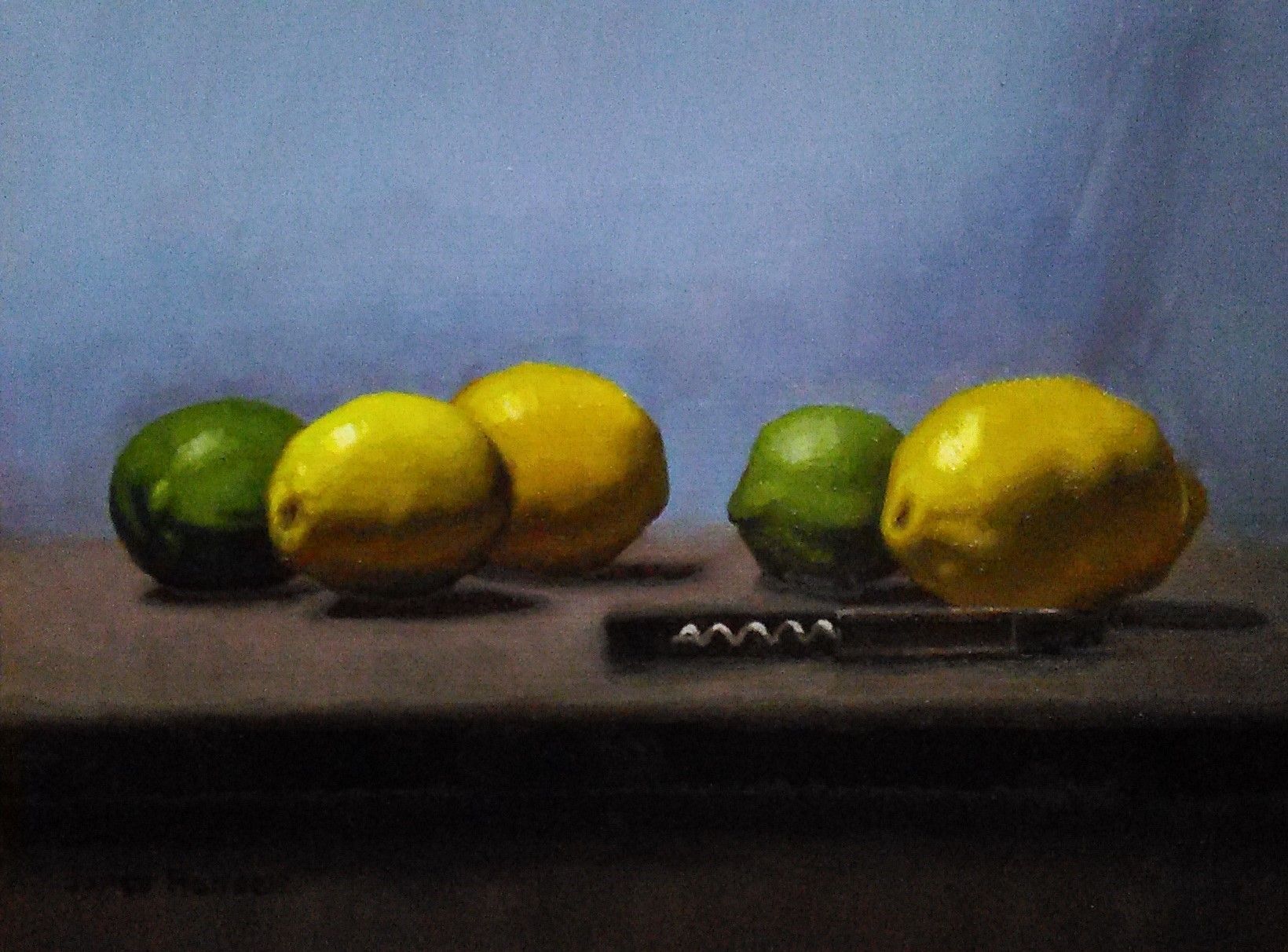
Lemons & Limes
9" x 12"
Oil on canvas
Greetings fellow Steemians!
In today’s post I wanted to share my latest still life painting along with an elaboration on its development.
At first I began with a refined block in with graphite establishing all the lights and shadow shapes.
Well before I even started, my intentions were to firmly establish the painting’s composition so as to focus more on form and color later throughout the stages of the painting.
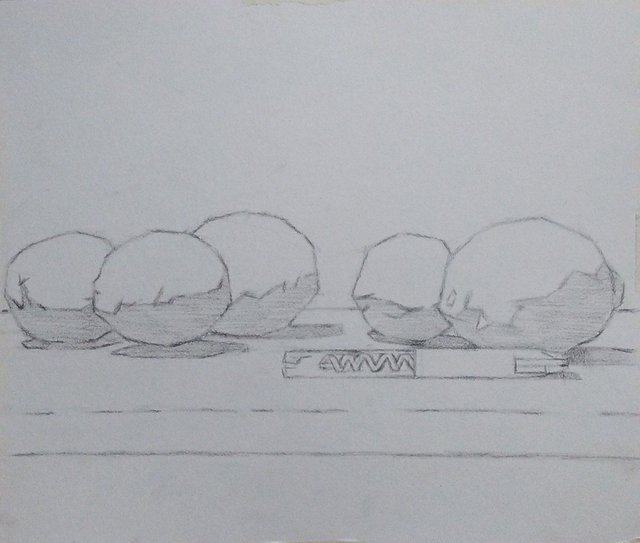
As I usually proceed, after the drawing was completed I then with charcoal covered the back of the drawing, secured it onto the painting surface, and transferred it to the canvas with a pen. After lifting the paper off the surface, I then “sealed” the charcoal transfer by tracing it with a Faber Castell Pitt pen.
(I’ve been a fan of these pens for a while now when it comes to transfer drawings as they are transparent, dry relatively fast, and are easily covered with oil paint.)
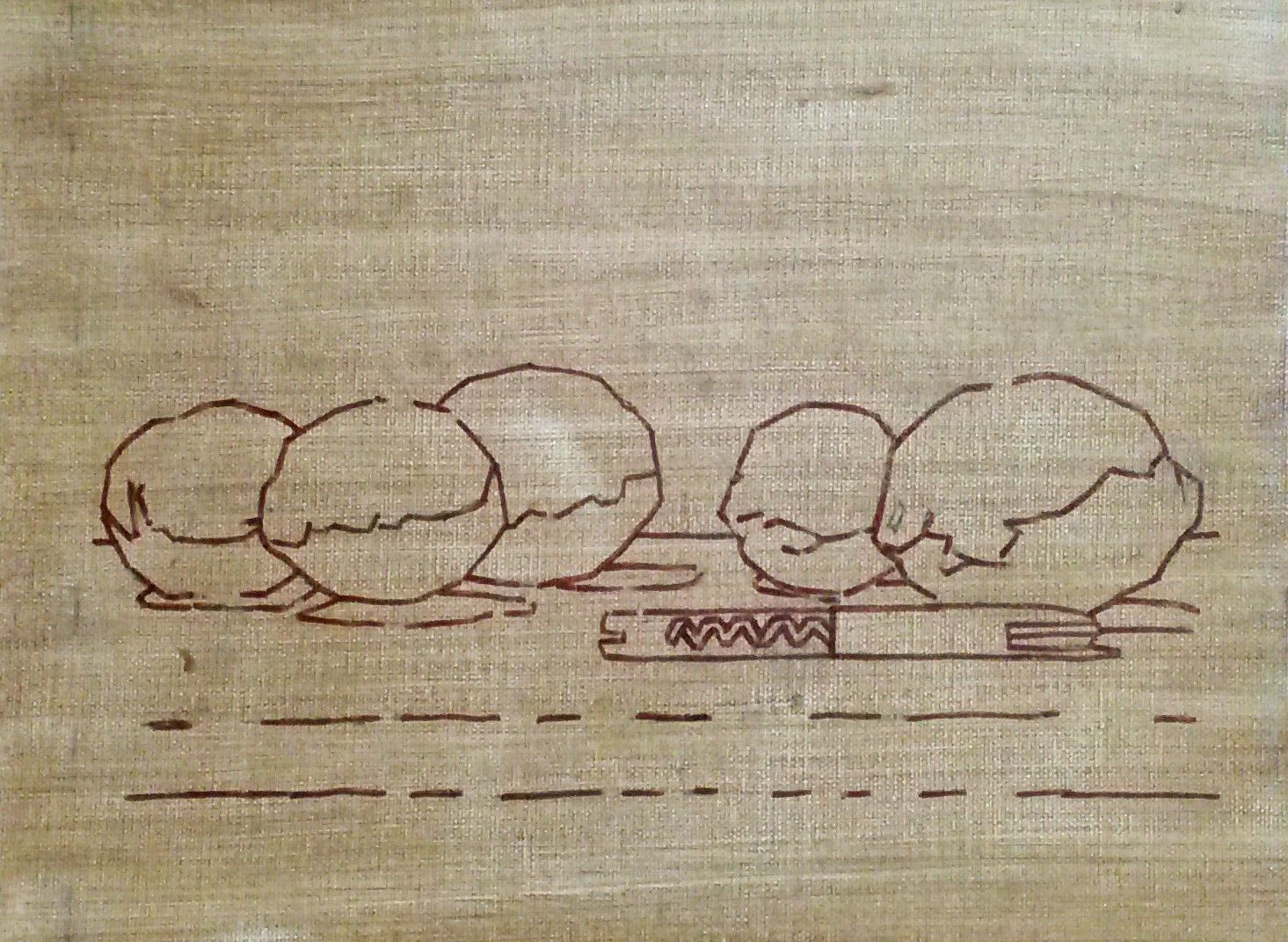
Lately I have been finding myself mixing strings once again as I use to do during my training in the atelier. While it can initially be time consuming, it does pay off in the long run in that it does make the act of painting go faster as well as making it easier to navigate oneself in the realms of juggling value, temperature, form, and chroma.
For a long time I’ve been content with brush mixing and generating strings as I progress through the painting, but I admit it does become annoying in never quite having enough paint when you need it. Plus, it also does help in controlling your white in keeping it from creeping into everything.
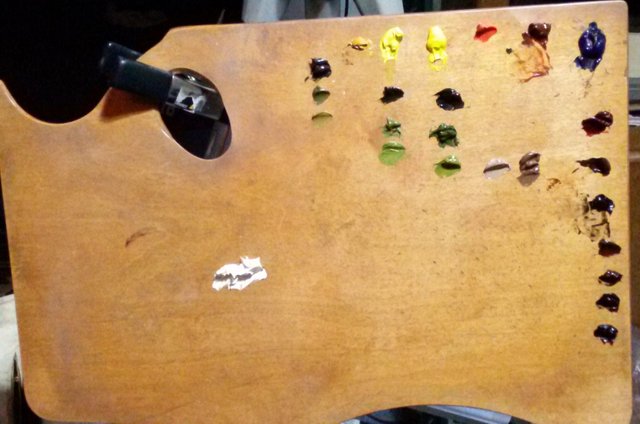
As with the nature of highly chromatic objects, the early part of this stage I found to be very tricky. I was very sure as to not move too fast. Since there was a lot of reflected light and variations in the shadows, I kept them very thin and transparent, knowing that if and when they were apparently wrong, I could go over them again without too much paint build up. The cast shadows I found to be relatively easier in that they were more uniform.
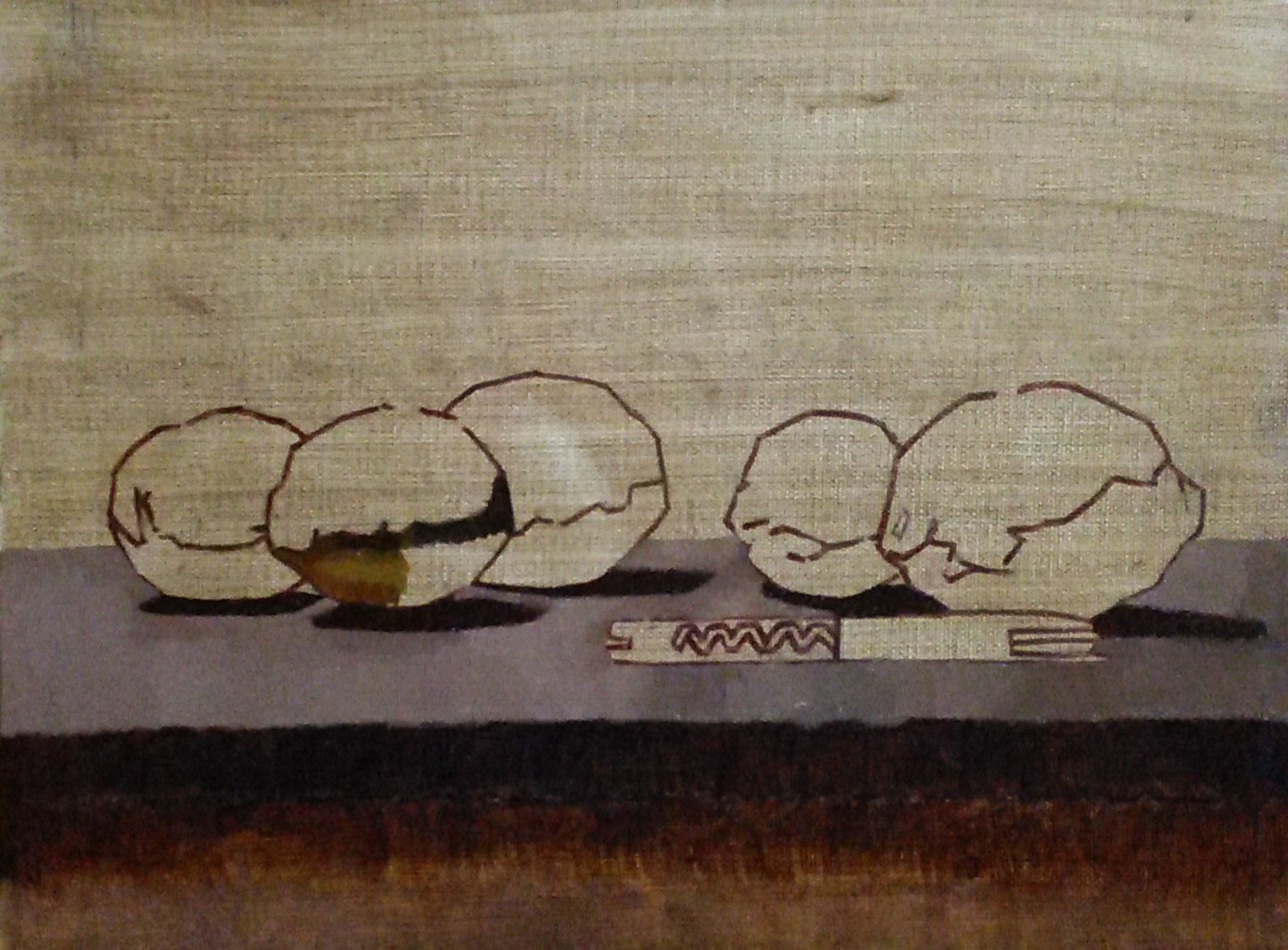
After working in the shadows and massing in the ground plane, this allowed for a more accurate judgement in context and comparing value.
Since I initially completed in working in the darks, I could then begin massing in the lights, and then bridging them together by form turning form the edges of the core shadows. Thinking and acting in this way assists in keeping the painter from meandering about with second guessing in form turning. Once I have my lightest lights and darkest darks established I can then judge my midtones easier.
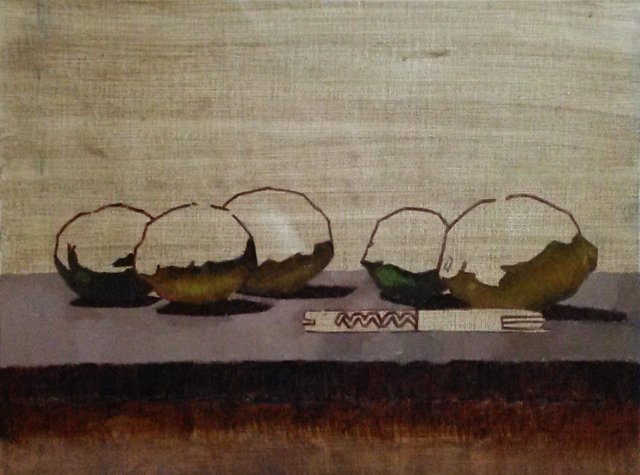
After tiling in my lights on the first lemon on the right, I then made sure to keep the midtones coming out of the edge of the shadow cold but neutral. Working away from those midtones, I then turned into the local color and then into the lights. I worked on the next lime in the same fashion.
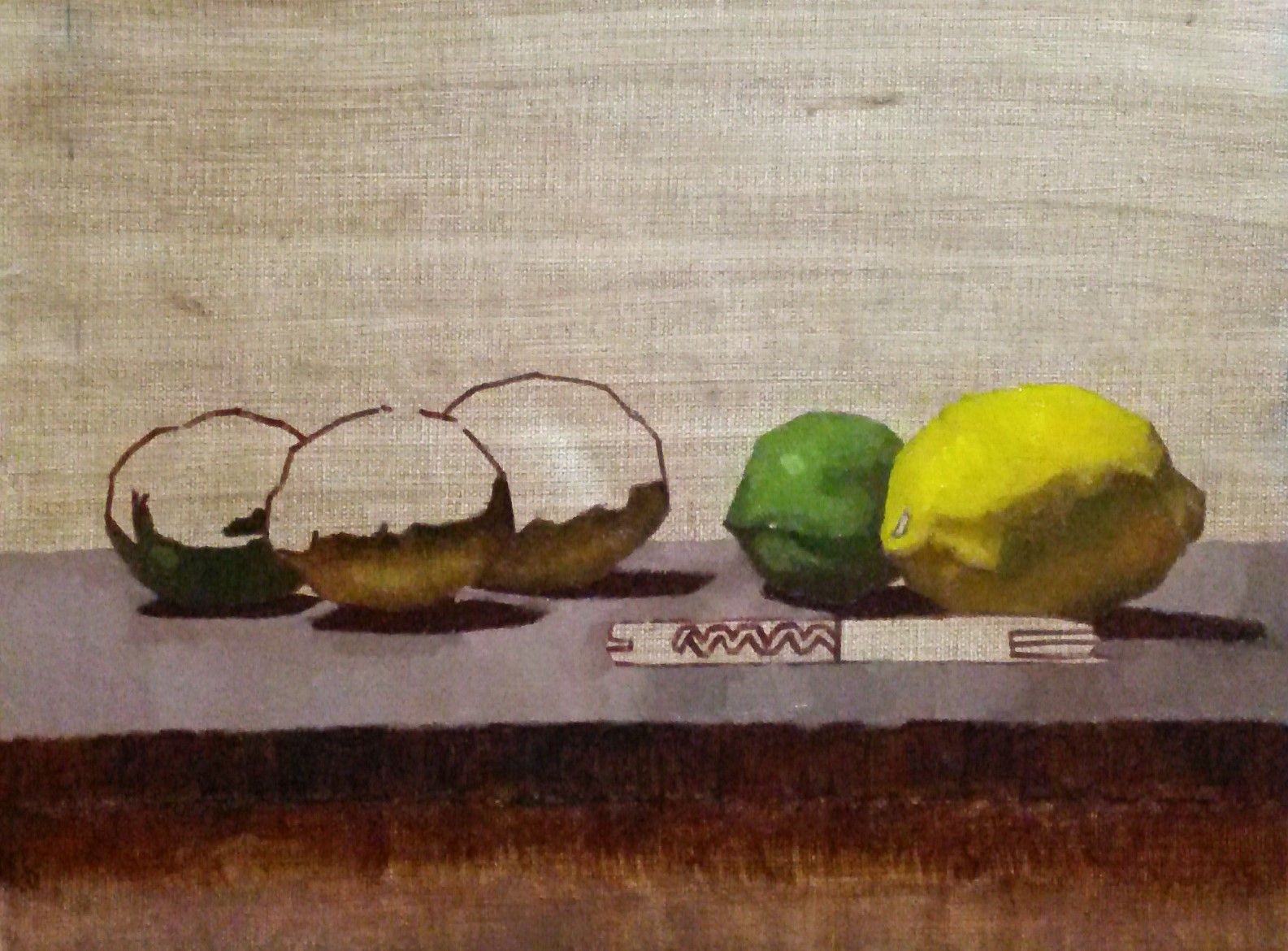
While working methodically from right to left, I then simultaneously worked in the background paying close attention to the edges where it met the fruits.
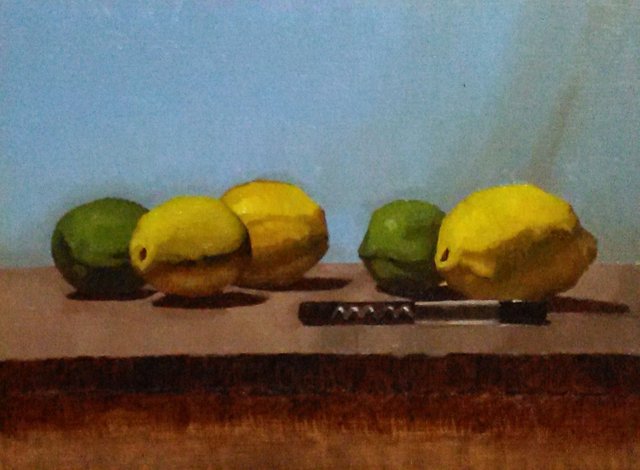
Once I found the painting to be completely covered, I then decided that the first pass on the background wasn’t heading in the right direction. I thought it wasn’t harmonizing well with the rest of the picture.
Using mixtures of venetian red and ultramarine blue, I then started to rework the cloth background.
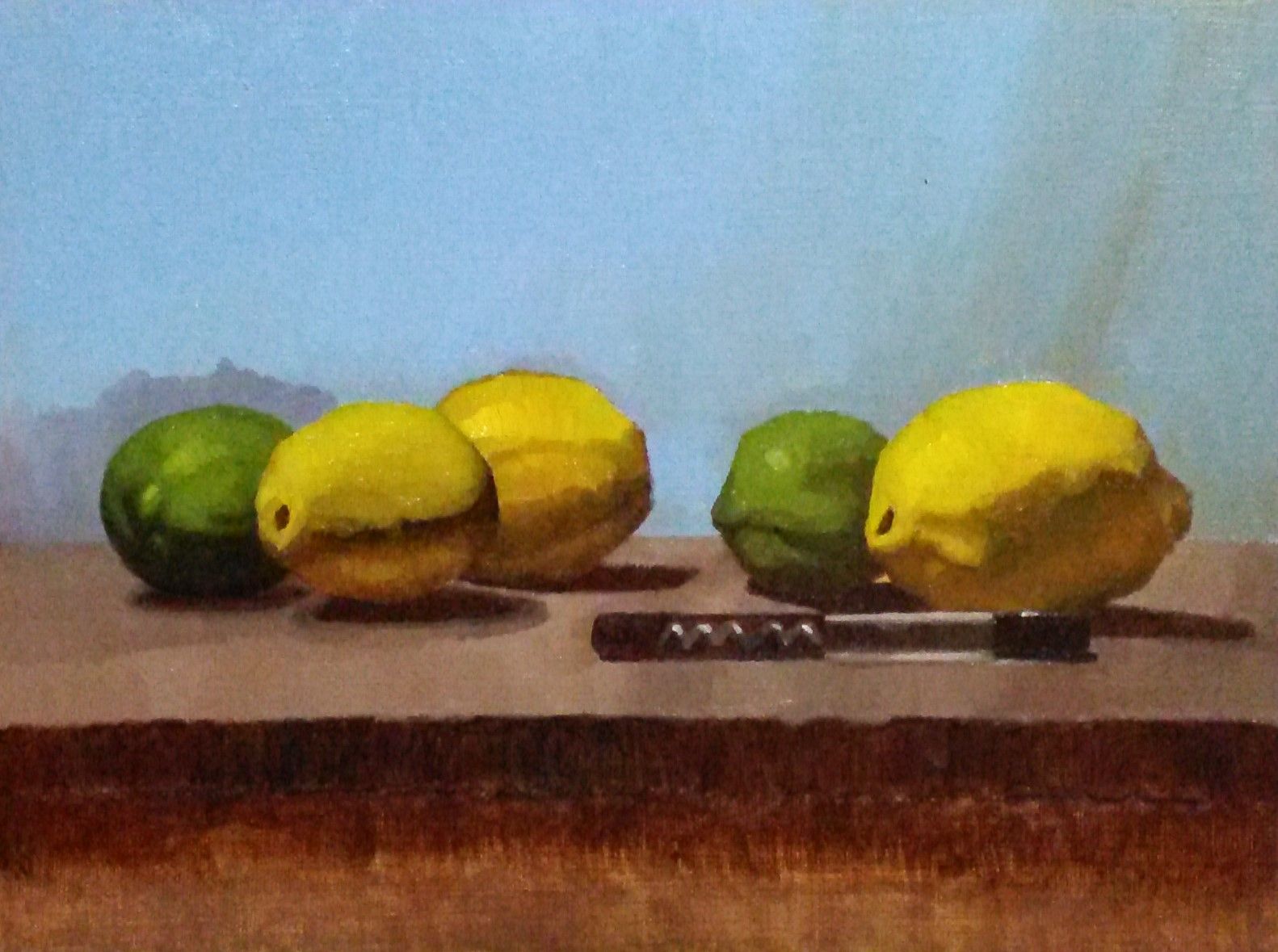
Due to the transparent nature of the cadmiums I was using, I found that I had to save those thicker and opaque lights for last, slowly building them up.
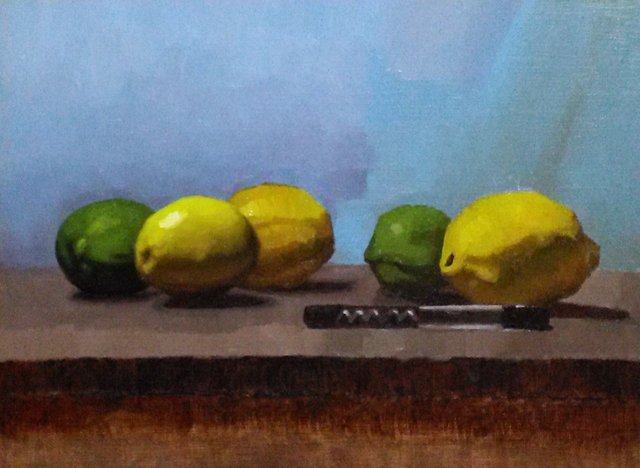
As I was finishing up the background, I made sure to increase the value as I worked my way up to give it more atmosphere.
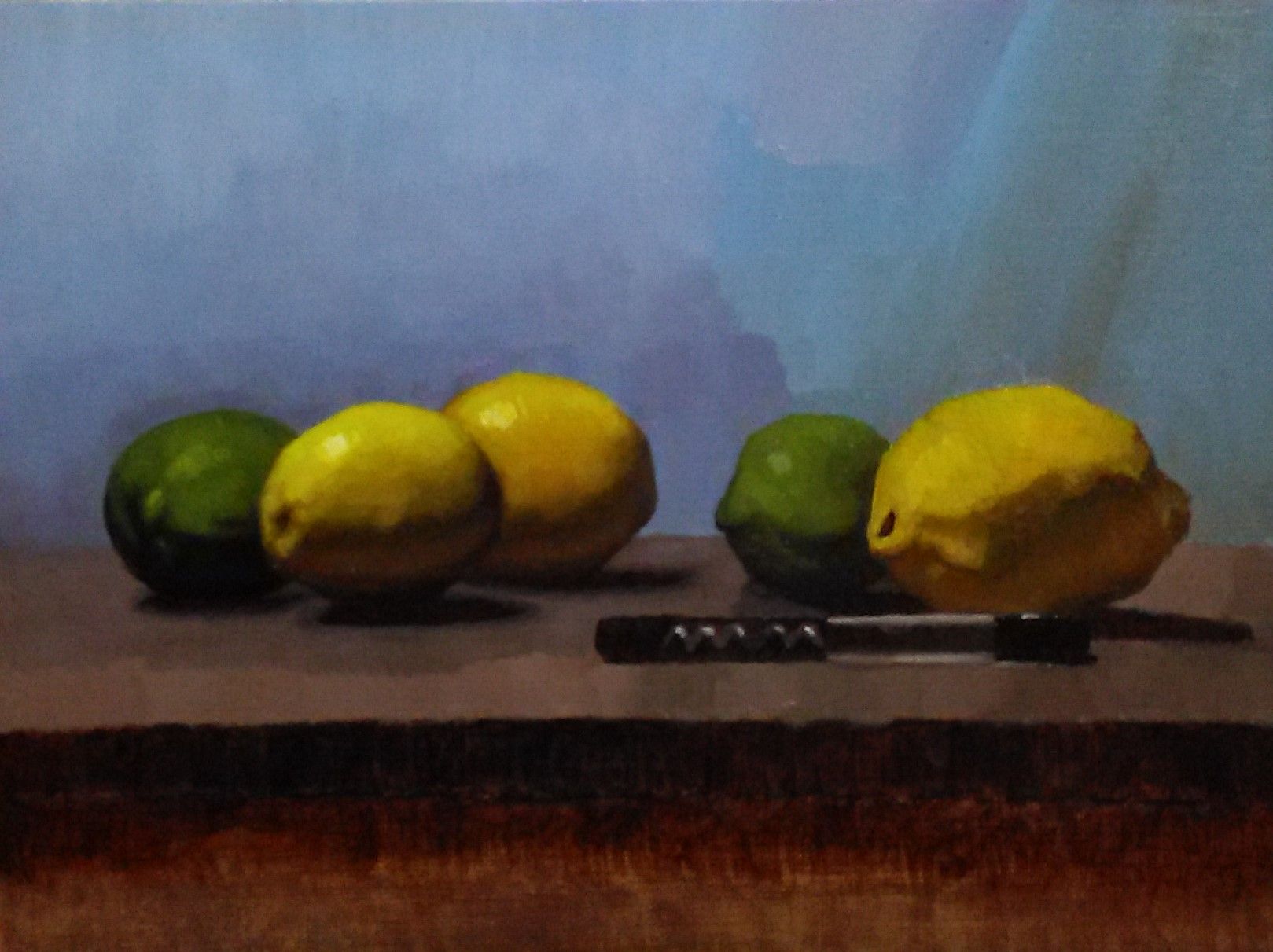
As I was finishing the corkscrew, I also decided to rework the ground plane and its receding edges to the background.
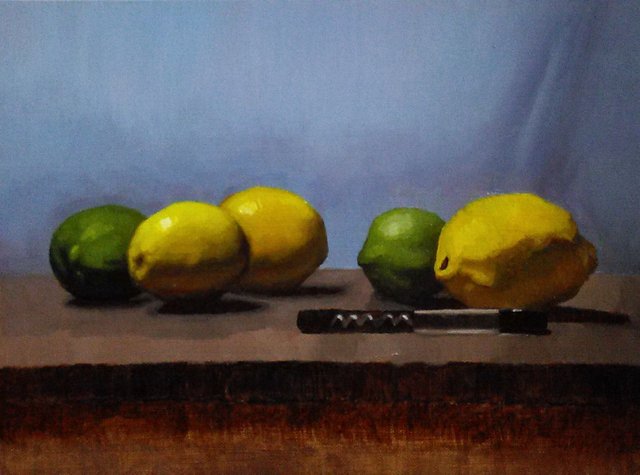
And for last I then worked on the cast shadow under the wooden ground plane followed by any random touch ups and edgework that caught my eye.
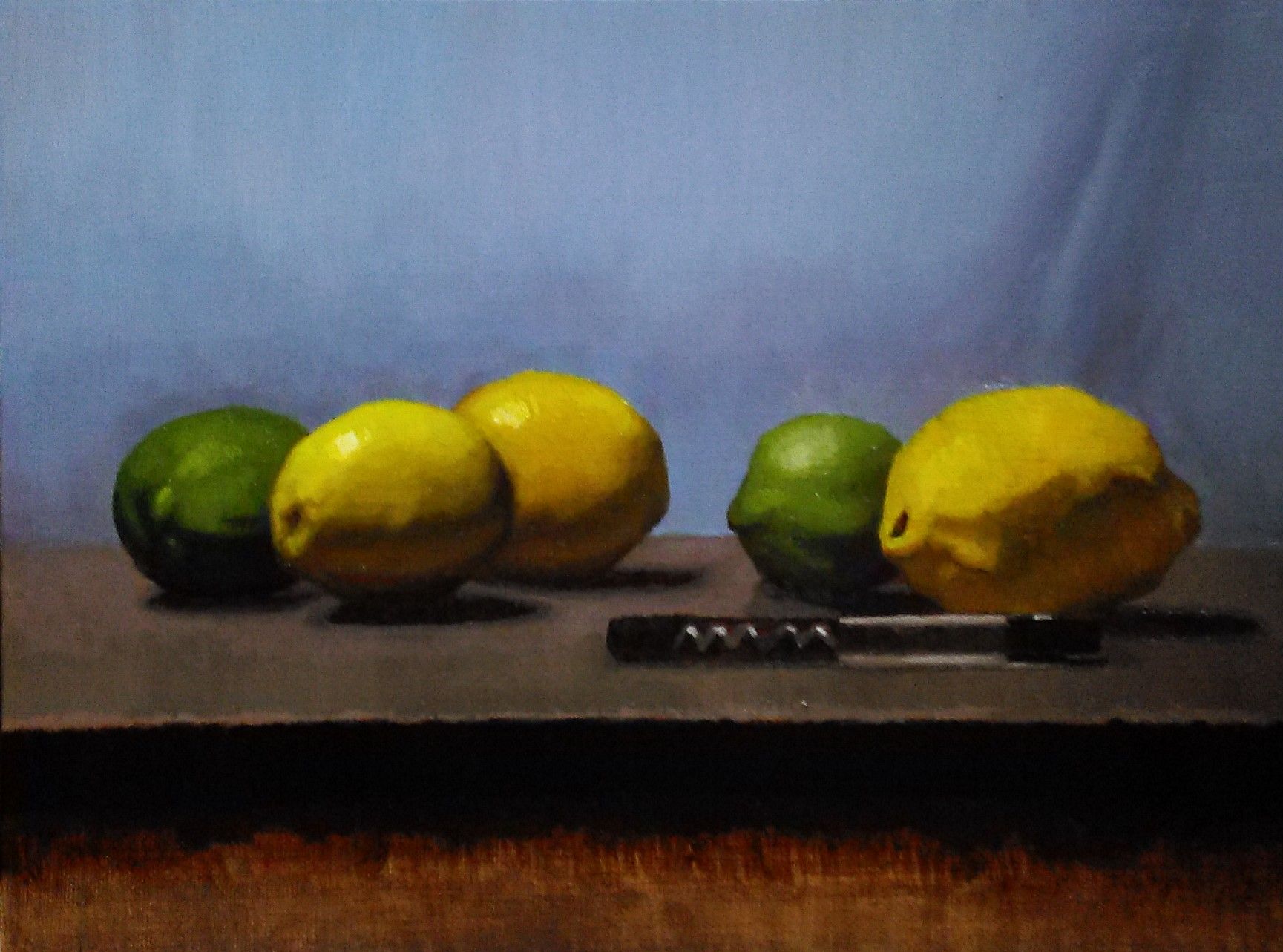
..Aaannd it's done!

The palette I used for this painting was titanium white, yellow ocher, cadmium yellow light, permanent yellow light, cadmium red, venetian red, burnt sienna, burnt umber, ultramarine blue, and ivory black.
Please feel free to let me know what you think?
Thanks for reading Everyone!
-James Hansen
Very good artwork and well explained step by step. Thank you very much or share it!
Thank you so much! I'm glad you enjoyed it :)
You got a 50.00% upvote from @cabbage-dealer courtesy of @jameszenartist!
You got a 0.14% upvote from @emperorofnaps courtesy of @jameszenartist!
Want to promote your posts too? Send 0.05+ SBD or STEEM to @emperorofnaps to receive a share of a full upvote every 2.4 hours...Then go relax and take a nap!
This post has received a 16.67 % upvote from @astrobot thanks to: @jameszenartist.
Introducing @bdbot voting service.Send 0.01 sbd/steem for 50-55 vote value is 3x sbd .Url As Memo Service active @bdbot
